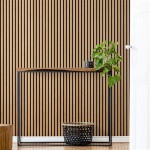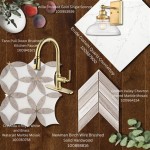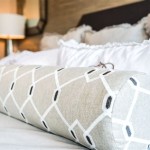Ideas for Decorating a Dining Table
The dining table serves as a central gathering point within a home, a space where meals are shared, conversations flow, and memories are created. Decorating this space effectively can significantly enhance the atmosphere of a dining room and elevate the overall dining experience. Thoughtful decoration can transform a simple table into a focal point reflecting personal style and setting the mood for any occasion.
Effective dining table decoration involves considering various elements such as color palettes, textures, heights, and the overall style of the home. The goal is to create a visually appealing arrangement that is both functional and aesthetically pleasing. The choice of décor should complement the existing interior design, while also adding a touch of personality and charm to the space.
When deciding on dining table decorations, consider the table's shape and size. A long rectangular table, for instance, can accommodate a more elaborate centerpiece than a small, round table. The scale of the decorations should be proportionate to the table, preventing the space from feeling cluttered or unbalanced.
Selecting a Cohesive Theme or Style
Establishing a cohesive theme or style serves as the foundation for a well-decorated dining table. This provides a framework for selecting decorations that complement each other and create a unified look. Whether aiming for a rustic, modern, minimalist, or traditional style, adherence to a specific theme ensures a harmonious and aesthetically pleasing arrangement.
For a rustic theme, consider incorporating natural elements such as wood, burlap, and greenery. A wooden table runner, combined with mason jar vases filled with wildflowers, can evoke a charming and rustic ambiance. Opting for earthy tones such as browns, greens, and creams will further enhance the rustic feel. Adding elements like pinecones or small logs as accents can also contribute to the overall theme.
A modern theme often involves clean lines, minimalist designs, and a focus on functionality. A simple glass vase holding a single statement flower, paired with geometric placemats and sleek silverware, can create a sophisticated and modern look. Colors such as black, white, and gray, accented with pops of bold color, are commonly used in modern dining table decorations.
For a minimalist approach, less is more. Focus on essential elements and avoid overcrowding the table. A simple linen tablecloth, coupled with a few strategically placed candles and a small bowl of fruit, can create an elegant and understated dining table setting. Neutral colors and natural materials contribute to the minimalist aesthetic, promoting a sense of calm and serenity.
A traditional theme often incorporates classic elements such as fine china, silver candlesticks, and floral arrangements. A formal tablecloth, combined with elegant place settings and a centerpiece featuring roses or lilies, can evoke a sense of traditional sophistication. Colors such as gold, silver, and rich jewel tones are frequently used in traditional dining table decorations.
The selection of a theme can be adapted to seasonal changes. For example, during the autumn months, incorporating elements like pumpkins, gourds, and fall foliage can create a festive and seasonal ambiance. During the winter holidays, adding elements like pine branches, ornaments, and candles can evoke a warm and celebratory atmosphere.
Incorporating Centerpieces Effectively
The centerpiece serves as the focal point of the dining table and plays a crucial role in setting the overall tone. Centerpieces can range from elaborate floral arrangements to simple collections of candles or decorative objects. The key is to choose a centerpiece that complements the table's size and shape, as well as the overall theme of the dining room.
When selecting a centerpiece, consider its height. A centerpiece that is too tall can obstruct views across the table, hindering conversation and creating an awkward dining experience. Ideally, the centerpiece should be low enough to allow for easy interaction among diners. Alternatively, a tall, slender centerpiece can be used, provided it does not block sightlines.
Floral arrangements are a classic and versatile centerpiece option. Fresh flowers can add color, fragrance, and vibrancy to the dining table. Consider the season and choose flowers that are readily available and complement the overall theme. For a formal occasion, a traditional arrangement of roses or lilies may be appropriate. For a more casual setting, wildflowers or sunflowers can create a relaxed and inviting atmosphere.
Candles are another popular centerpiece option, adding warmth and ambiance to the dining table. Candles can be arranged in a variety of ways, from simple candleholders to elaborate candelabras. Grouping candles of varying heights can create visual interest and add depth to the centerpiece. Consider using scented candles to further enhance the atmosphere, but choose scents that are not overpowering and complement the meal being served.
Non-floral centerpieces can also be effective, especially for those seeking a more unique and contemporary look. A collection of decorative objects, such as sculptures, vases, or lanterns, can create a visually appealing and personalized centerpiece. Consider arranging these objects in a cohesive manner, taking into account their size, shape, and color. Varying textures and materials can also add visual interest to the centerpiece.
For a minimalist approach, a single statement piece can serve as an effective centerpiece. A large bowl of fruit, a unique sculpture, or a single dramatic flower can create a focal point without overwhelming the table. This approach is particularly well-suited for smaller dining tables or those seeking a more understated look.
Utilizing Table Linens and Place Settings
Table linens and place settings are integral components of dining table decoration, contributing significantly to the overall aesthetic and functionality. The choice of tablecloths, placemats, napkins, and tableware can greatly enhance the dining experience and reflect personal style.
Tablecloths provide a foundation for the dining table setting and can instantly transform the look of the table. The choice of fabric, color, and pattern should complement the overall theme of the dining room. Linen tablecloths offer a classic and elegant look, while cotton tablecloths are more casual and practical. A tablecloth that extends slightly beyond the edges of the table is generally considered aesthetically pleasing. For a more modern look, consider using a table runner instead of a full tablecloth.
Placemats serve both functional and decorative purposes, protecting the table from spills and scratches while also adding visual interest to the place setting. Placemats come in a variety of materials, including fabric, cork, bamboo, and vinyl. Consider the overall theme of the dining room when selecting placemats. For a rustic theme, woven placemats may be appropriate. For a modern theme, sleek and geometric placemats may be more suitable.
Napkins are an essential element of any dining table setting, providing both functionality and visual appeal. Fabric napkins are generally considered more elegant than paper napkins and can be folded in a variety of ways to add a touch of sophistication to the place setting. The color and pattern of the napkins should complement the tablecloth and placemats. Consider using napkin rings to add a touch of formality or personal flair.
Tableware, including plates, glasses, and silverware, plays a crucial role in completing the dining table setting. The style of the tableware should complement the overall theme of the dining room. Fine china is often used for formal occasions, while more casual stoneware or porcelain is appropriate for everyday use. Consider the color and design of the tableware when selecting it, ensuring that it complements the other elements of the place setting.
The arrangement of the place setting should be both functional and aesthetically pleasing. The plate should be centered on the placemat, with the silverware arranged on either side. The fork is typically placed to the left of the plate, and the knife and spoon are placed to the right. The water glass is placed above the knife, and the wine glass is placed to the right of the water glass. The napkin can be placed to the left of the fork, on top of the plate, or tucked under the silverware, depending on personal preference.
By carefully considering the selection and arrangement of table linens and place settings, it is possible to create a dining table that is both functional and visually appealing, enhancing the overall dining experience and reflecting personal style.

Cozy Dining Room Decorating Ideas Sanctuary Home Decor

Dining Room Decorating Idea And Model Home Tour Small Design Dinning Decor

30 Best And Plush Dining Room Decoration Ideas For Your Home

Thrifty And Chic Diy Projects Home Decor

8 Décor Tips For Your Dining Table Everyday Classic Casual Home

Dining Room Table Decor Ideas How To Decorate Your

33 Dining Room Decorating Ideas Design Inspiration

55 Everyday Dining Table Decor Ideas Craftionary

How To Update Dining Room Furniture Setting For Four Interiors

33 Dining Room Decorating Ideas Design Inspiration








